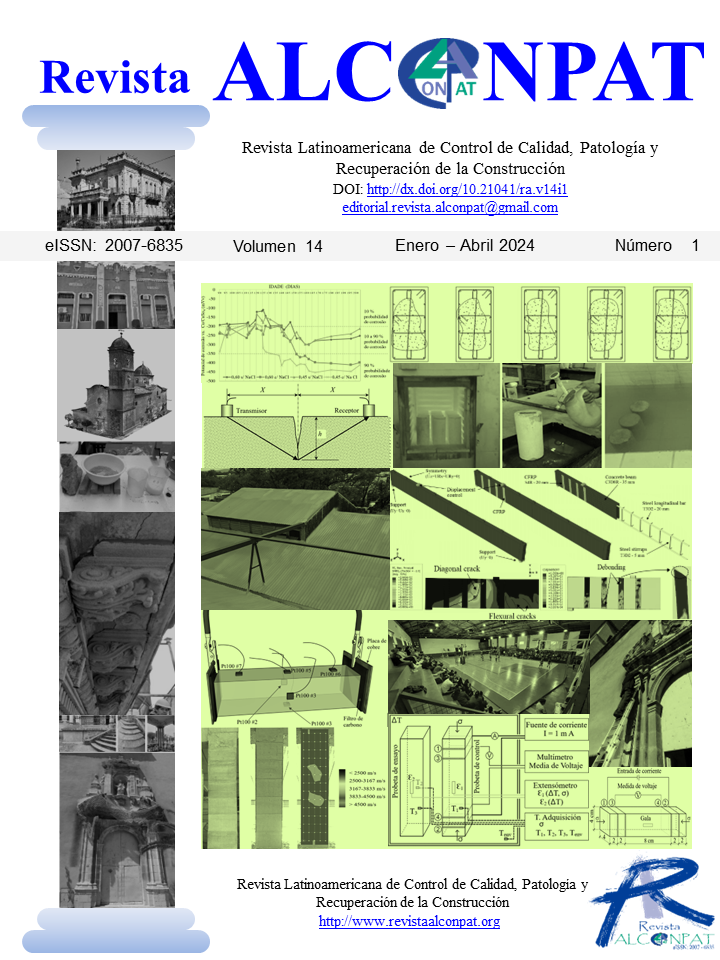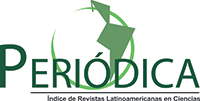Restoration of the facade of the church of San Pedro Apostol in Agost, Spain
DOI:
https://doi.org/10.21041/ra.v14i1.710Keywords:
restoration, limestone, expanded clay, mortar, historic buildingAbstract
This work describes the studies and the intervention carried out for the restoration of the facade of San Pedro Apostol in the parish church of Agost. This facade was made at the end of the 18th century in limestone. After an initial inspection and graphic survey of the facade, the lesions, their origin, and the solution to them were identified by using advanced restoration techniques. The stone elements damaged or destroyed by the passage of time are composed of calcite, dolomite and silica, with plaster joints, and have been reconstructed either through the use of new elements or, for the most part, through systems of recovery of the initial volume with the use of a light core of polystyrene, lime mortars, expanded clay, fiberglass and carbon together with infiltrations of resins in the disintegrated areas. After a delicated intervention process using innovative techniques, the facade was completed in June 2023.
Downloads
References
Benavente, D. (2002). Modelización y estimación de la durabilidad de materiales pétreos porosos frente a la cristalización de sales. Tesis doctoral. Universidad de Alicante. https://rua.ua.es/dspace/bitstream/10045/9912/1/Benavente-Garcia-David.pdf
Benavente, D., De Jongh, M., Cañaveras, J. C. (2021). Weathering processes and mechanisms caused by capillary waters and pigeon droppings on porous limestones. Minerals, 11(1), 18. https://doi.org/10.3390/min11010018
De los Ríos, A., Cámara, B., García del Cura, M. A., Rico, V. J., Galván, V., Ascaso, C. (2009). Deteriorating effects of lichen and microbial colonization of carbonate building rocks in the Romanesque churches of Segovia (Spain). Science of The Total Environment, 407, 3, 1123-1134. https://doi.org/10.1016/j.scitotenv.2008.09.042
Esbert, R. M., Losada, J. M. (2003). Criterios de Intervención en materiales pétreos. Revista del Instituto de Patrimonio Histórico Español. 2.
García Galán, Javier (2014). Análisis comparativo del comportamiento de diferentes Morteros de Reintegración en la construcción: Caso de la Iglesia de San Pedro Apóstol en Agost (Alicante). Trabajo Fin de Grado. Grado en Arquitectura Técnica. Universidad de Alicante (España)
González-Moreno Navarro, A. (1991), La restauración de monumentos a las puertas del siglo XXI. Informes de la Construcción. 43 (413): 5-22. https://dialnet.unirioja.es/revista/2142/V/43
González-Moreno Navarro, A. (2012), Restauración monumental: ¿el método en crisis?. Informes de la Construcción. 64: 13-22. https://doi.org/10.3989/ic.11.077
Grossi, C. M., Esbert, R. M. (1994). Las sales solubles en el deterioro de rocas monumentales. Revisión bibliográfica. Materiales de construccion, 44, (235), 15-30. https://doi.org/10.3989/mc.1994.v44.i235
ICOMOS International Scientific Committee for Stone (ISCS) (2008), ICOMOS-ISCS: Illustrated glossary on stone deterioration patterns. http://www.international.icomos.org/publications/monuments_and_sites/15/pdf/Monuments_and_Sites_15_ISCS_Glossary_Stone.pdf
Laborde, A. (2013). Proyecto COREMANS: Criterios de intervención en materiales Pétreos. IPCE. Ministerio de Educación, Cultura y Deporte.
Solá-Morales, I. (2001), Teorías de la Intervención Arquitectónica. Revista PH. No. 37. https://doi.org/10.33349/2001.37.1269
Vidal-Bernabé, I. (1981). La Escultura Monumental barroca en la diócesis de Orihuela-Alicante. Excma. Diputación provincial de Alicante. Pag. 148-149.
Published
How to Cite
Issue
Section
License
_______________________________
License in effect from September 2020
You are free to:
- Share — copy and redistribute the material in any medium or format for any purpose, even commercially.
- Adapt — remix, transform, and build upon the material for any purpose, even commercially.
- The licensor cannot revoke these freedoms as long as you follow the license terms.
Under the following terms:
- Attribution — You must give appropriate credit , provide a link to the license, and indicate if changes were made . You may do so in any reasonable manner, but not in any way that suggests the licensor endorses you or your use.
- No additional restrictions — You may not apply legal terms or technological measures that legally restrict others from doing anything the license permits.
Notices:
You do not have to comply with the license for elements of the material in the public domain or where your use is permitted by an applicable exception or limitation .
No warranties are given. The license may not give you all of the permissions necessary for your intended use. For example, other rights such as publicity, privacy, or moral rights may limit how you use the material.





















.png)














